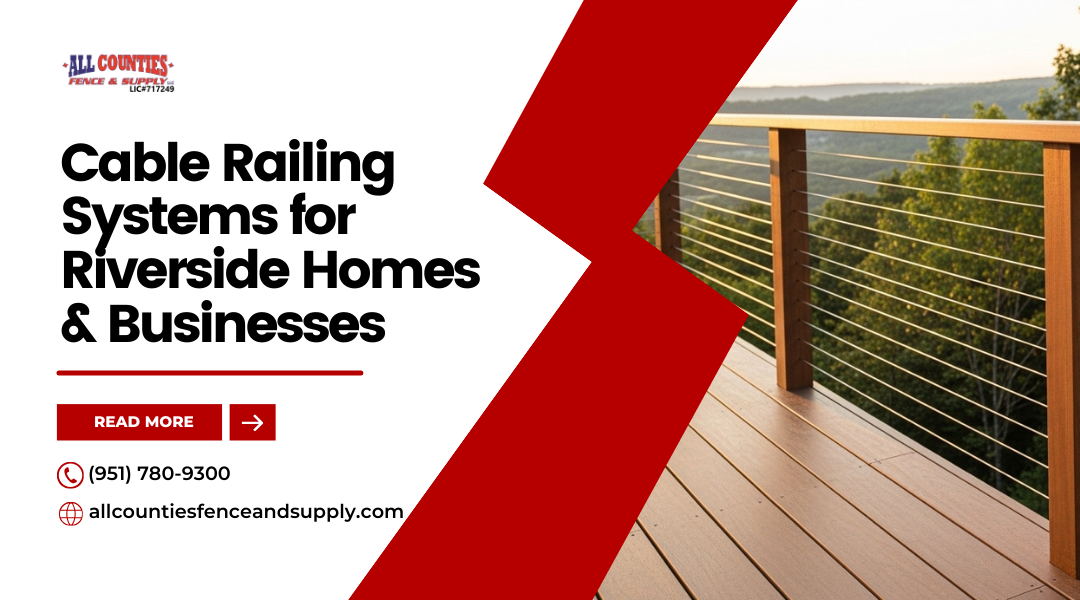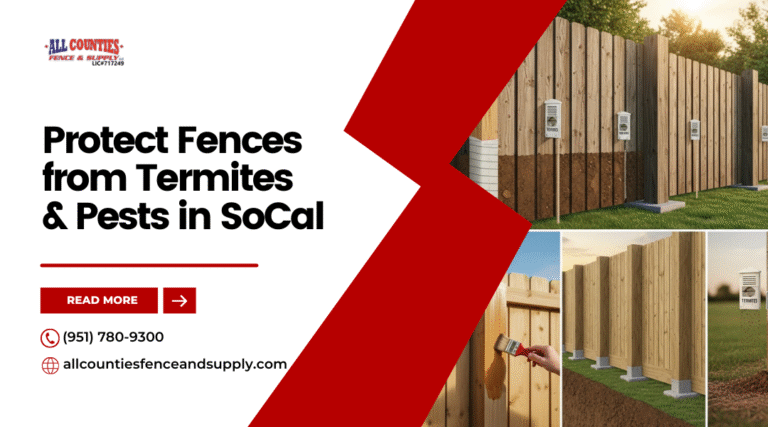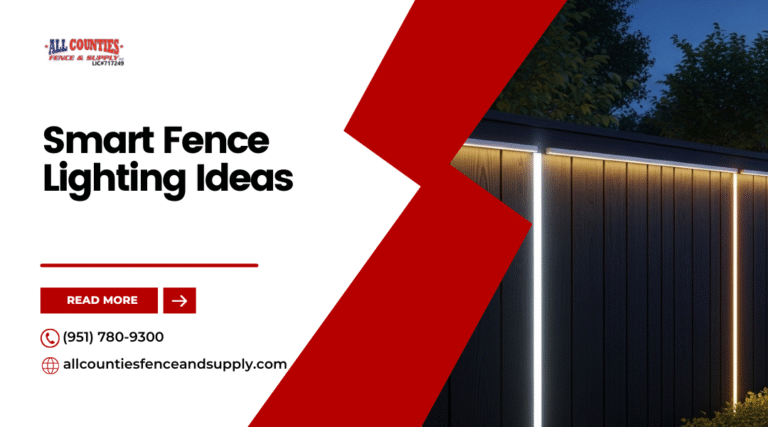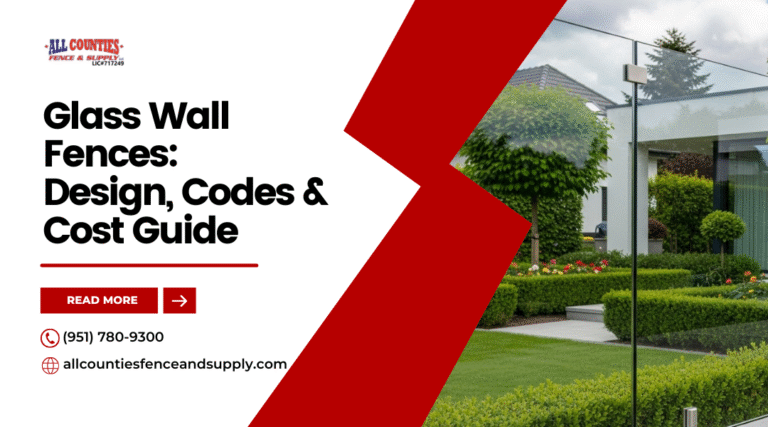If you’re weighing options for upgrading your Riverside property, cable railing systems may be exactly what you need. Known for their sleek look and durable materials, these railings provide safety without blocking your view of the landscape. Cable railing systems are a smart choice if you want a balance of modern style, strength, and low maintenance for your home or business.
You’ll find that cable railings work well in many settings, from decks and balconies to staircases and walkways. Their slim stainless-steel cables create an open feel that pairs with both traditional and contemporary architecture. This makes them especially appealing in Riverside, where outdoor living spaces often highlight scenic views and year-round sunshine.
At the same time, it’s important to understand the full picture before deciding. Cost, installation requirements, and upkeep all play a role in determining if cable railing is right for your project. By exploring the benefits, potential drawbacks, and how they compare to other railing options, you can make an informed choice that fits your property’s needs.
What Are Cable Railing Systems?
A cable railing system uses tensioned cables in place of bulky panels or spindles. It provides safety while keeping sightlines open, making it a practical choice for decks, balconies, and stairways near the water. The design, materials, and differences from traditional railings determine how well it performs and how it looks in your space.
Basic Design and Structure
A cable railing system is built around posts, cables, and a top rail. The posts act as the main supports, holding the cables in place. Cables are threaded through pre-drilled holes in the posts and tightened with hardware to create a secure barrier.
You can mount posts on top of a deck surface or to the side (fascia mount). Fascia mounting saves floor space, while top mounting is simpler for most installations.
The cables usually run horizontally, but vertical designs are also available. Horizontal layouts are easier to install, while vertical layouts reduce the chance of children climbing the cables.
When installed correctly, the tensioned cables meet safety codes and provide the same protection as other railing types. The slim design creates an open look without sacrificing strength.
Common Materials Used (Stainless Steel, Aluminum, Wood)
Stainless steel cables are the standard choice because they resist rust and hold tension well. They are strong enough to withstand outdoor conditions, including moisture and sun exposure near a riverside property.
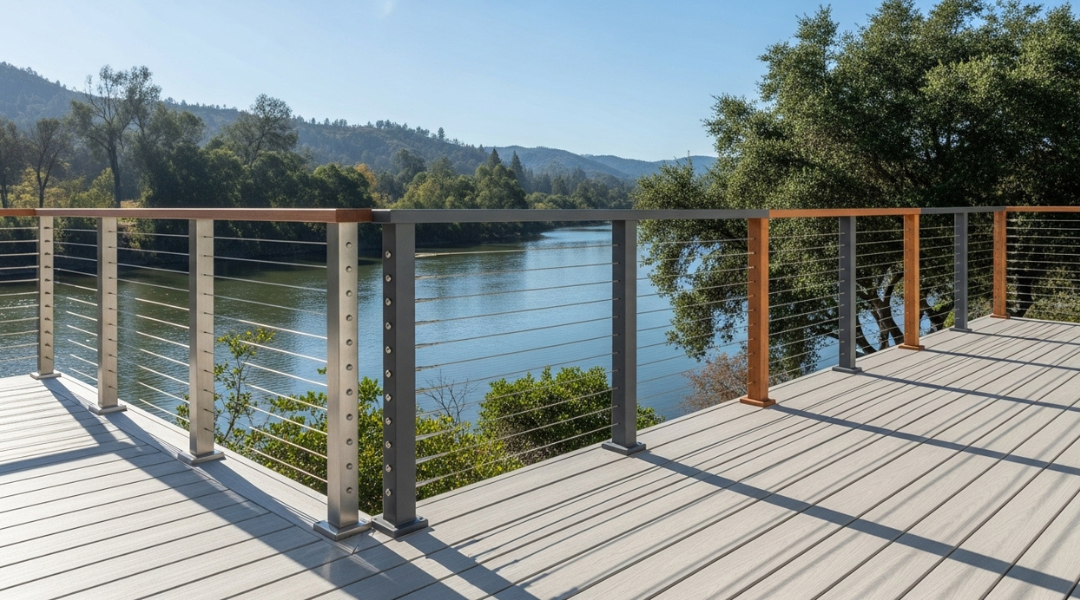
Metal posts, often aluminum or stainless steel, pair well with the cables. Aluminum posts are lightweight, easy to work with, and available in powder-coated finishes for added durability. Stainless steel posts are heavier and more expensive but provide maximum strength and corrosion resistance.
Wood posts are another option. They bring warmth and a natural look but require more upkeep, especially in damp environments. Many homeowners choose a combination, such as stainless steel cable railing with wood posts, to balance durability with a softer appearance.
The handrail can also vary in material, with wood, aluminum, or steel options. This gives you flexibility to match the railing system with the style of your property.
How Cable Railings Differ From Traditional Options
Traditional railing systems often use wood balusters, glass panels, or metal pickets. These materials create a solid barrier but can block views and make spaces feel enclosed.
Cable railing systems replace those bulky elements with slim cables. This allows you to maintain safety while keeping the scenery visible. For a riverside property, this means you can enjoy the water view without obstruction.
Maintenance also differs. Wood railings need painting or sealing, and glass panels collect fingerprints and dirt. Cable railing requires less work—typically just checking cable tension and wiping down surfaces.
In terms of style, cable railing has a modern, minimalist look. While traditional railings can feel heavier or more ornate, cable systems blend easily with both contemporary and transitional designs. This makes them versatile for many property types.
Benefits of Cable Railing Systems for Riverside Homes
Cable railing systems give you a modern look, preserve your view of the river, and hold up well in California’s climate. They also reduce the amount of upkeep you need compared to traditional wood or iron railings.
Modern, Minimalist Aesthetic
Cable railings use slim stainless steel cables instead of bulky spindles or panels. This design creates a clean, minimalist style that blends well with both contemporary and traditional homes.
You can pair the cables with wood, aluminum, or composite posts depending on the look you want. For example, wood posts add warmth, while metal posts emphasize a sleek, industrial feel.
Because the cables are thin and unobtrusive, they don’t compete with other design elements. This makes them a good choice if you want your riverside property to feel open and uncluttered.
Maximized Views of Riverside Landscapes
Thick wood balusters or glass panels can block or distort your view. Cable railings avoid this problem by using narrow cables that are barely noticeable from a distance.
This design is especially useful if your property overlooks the Santa Ana River or another scenic waterway. You can enjoy the full view of the water and surrounding landscape without the railing becoming a distraction.
The open sightlines also make outdoor spaces feel larger. On decks or balconies, the railing almost disappears, giving you a clear connection to the outdoors while still providing safety.
Durability in California’s Climate
California’s riverside areas experience sun, moisture, and seasonal temperature changes. Cable railing systems, especially those made with marine-grade stainless steel, resist corrosion and fading better than many other materials.
Unlike wood, which can warp or rot when exposed to moisture, stainless steel cables maintain their strength and shape. Aluminum or composite posts also hold up well against rust and insect damage.
If you live near the coast or in areas with high humidity, you can choose higher-grade stainless steel for extra protection. This ensures your railing system continues to perform safely and look good over time.
Low Maintenance Compared to Wood or Iron
Wood railings often need sanding, staining, or sealing to prevent weather damage. Iron railings can rust and require repainting. Cable railing systems reduce these tasks significantly.
Routine care usually involves wiping down the cables and posts with mild soap and water. In riverside areas, you may need to inspect for tension adjustments or clean more often due to moisture, but the effort is still minimal.
Because the materials resist decay and corrosion, you spend less time on upkeep and more time enjoying your outdoor space. This makes cable railings a practical choice for long-term use.
Potential Drawbacks and Considerations
When planning cable railing for a riverside property, you need to weigh installation costs, code requirements, privacy needs, and how well the system fits the type of space you own. These factors affect not only appearance but also safety, compliance, and long-term maintenance.
Initial Cost vs. Long-Term Value
Cable railing often requires a higher upfront investment compared to wood or vinyl. Stainless steel cables, fittings, and posts cost more, and professional installation can add to the expense.
However, the long-term value comes from low maintenance. Unlike wood, which needs sanding and staining, cable railing usually requires only light cleaning and occasional re-tensioning. This reduces ongoing labor and material costs.
If you plan to stay on your property for many years, the higher initial price may balance out through durability and fewer repairs. Still, you should budget carefully, especially if your project involves large decks or multiple levels.
Building Codes and Safety Regulations in Riverside County
Local building codes in Riverside County set rules for railing height, spacing, and strength. For example, cable spacing must prevent a 4-inch sphere from passing through, which usually means cables set no more than 3 inches apart.
Post spacing is also important. Wider spacing can lead to sagging cables, which may fail inspection. Many systems recommend post spacing of 4 to 6 feet to maintain proper tension and safety.
You should also confirm railing height requirements. Most residential decks require a minimum of 36 inches, while commercial or multi-family properties may need 42 inches. Checking with the county’s building department before installation helps you avoid delays and costly corrections.
Privacy Concerns vs. Openness
Cable railing is designed to be open and transparent, which is ideal for properties with scenic views of rivers, hills, or open land. The thin cables allow you to enjoy the surroundings without bulky barriers.
The drawback is reduced privacy. If your riverside property is close to neighbors, cable railing may expose your deck or patio more than a solid wood or glass option.
You can address this by combining cable railing with strategic landscaping, such as shrubs or trees, to block unwanted views while keeping the open feel toward the river. This balance helps you enjoy both openness and privacy.
Suitability for Different Property Types (Residential, Commercial, Outdoor Spaces)
Cable railing works well for many property types, but the considerations differ.
- Residential: Homeowners value the clear views and modern look. Maintenance is minimal, but DIY installation may be challenging due to precise tensioning requirements.
- Commercial: Businesses must consider heavy use and strict code compliance. Professional installation is often necessary.
- Outdoor spaces: Riverside decks, docks, and patios benefit from the durability of stainless steel, which resists corrosion from moisture.
When choosing for your property, think about foot traffic, exposure to weather, and the balance between cost and long-term performance. Proper post spacing and cable tension are especially critical in outdoor or high-use areas to ensure safety and longevity.
Comparing Cable Railing Systems to Other Fence and Railing Options
Different railing materials offer unique strengths and challenges. When you compare cable with iron, wood, and glass, the differences in cost, upkeep, and appearance become clear.
Cable vs. Iron Railing
Iron railings give a strong, traditional look and are often chosen for their decorative designs. They can last many years, but you need to watch for rust, especially in damp riverside environments. Regular painting or coating is necessary to keep them from corroding.
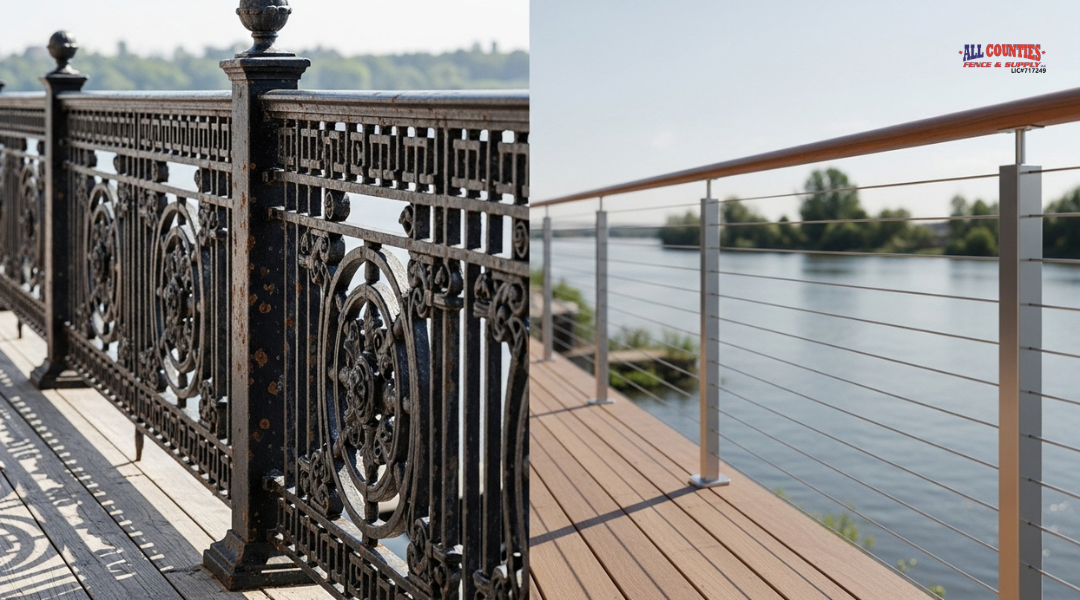
Cable railings, made from stainless steel, resist rust and weather damage much better. They require little upkeep beyond occasional tightening and cleaning.
Key differences:
- Iron: Heavy, decorative, prone to rust, higher maintenance.
- Cable: Sleek, corrosion-resistant, low maintenance.
If you want durability with minimal upkeep, cable usually outperforms iron in riverside settings.
Cable vs. Wood Railing
Wood railings provide warmth and a natural look that works well in rustic or traditional homes. However, wood can warp, crack, or rot when exposed to water and sun. You need to stain, seal, or paint it regularly to protect it from moisture.
Cable railings, by contrast, offer a modern appearance and do not require sealing or painting. They also allow for more open views, which can be important if your property overlooks the water.
Comparison table:
| Feature | Wood Railing | Cable Railing |
|---|---|---|
| Maintenance | High (staining, sealing) | Low (occasional cleaning) |
| Durability | Moderate, may rot | High, resists corrosion |
| Appearance | Warm, classic | Modern, open view |
If you prefer a long-lasting option with fewer maintenance tasks, cable is often the more practical choice.
Cable vs. Glass Panels
Glass panel railings provide a clear view and a sleek, modern style. They can make outdoor spaces feel open, but fingerprints, dirt, and water spots show easily. Cleaning is frequent, and scratches can be difficult to repair.
Cable railings also give an open view but without the constant cleaning demands. They are less likely to show wear and are easier to maintain in outdoor conditions.
Considerations:
- Glass: Clear view, frequent cleaning, potential scratching.
- Cable: Open view, easy upkeep, less fragile.
If you want minimal maintenance while still keeping your riverside view, cable often proves more practical than glass.
Key Factors to Evaluate Before Choosing Cable Railings
When selecting cable railings for a riverside property, you need to consider how the environment affects durability, what level of upkeep you can manage, and how the investment aligns with your long-term goals. Design choices and contractor options also play a direct role in how well the system fits your home.
Your Property’s Location and Design Style
Living near the water exposes your railing system to higher humidity, salt air, and stronger winds. These conditions can speed up corrosion if you don’t choose the right materials. Stainless steel, especially marine-grade 316, resists rust better in coastal or riverside environments.
The design of your home also matters. A modern house may benefit from sleek, brushed finishes, while a traditional home might look better with wood posts paired with cable infill. Matching the railing to your architecture keeps the system from looking out of place.
Think about sightlines as well. Cable railings are valued for their minimal visual obstruction, which means you can enjoy river views without bulky framing. If preserving the view is a priority, cable systems often outperform glass panels that may create glare.
Long-Term Maintenance Expectations
Cable railings require regular care to stay in good condition. You’ll need to clean stainless steel cables with mild soap and water to prevent buildup of dirt and minerals. In riverside areas, this routine should be done more often due to constant moisture.
Rust prevention is another key task. Even stainless steel can show small rust spots over time. Applying protective coatings and inspecting the system at least once a year helps extend its lifespan.
You should also check cable tension regularly. Cables can loosen slightly as they stretch, especially with seasonal changes in temperature. Keeping them evenly tightened ensures both safety and appearance. A yearly adjustment schedule works well for most homeowners.
Budget and ROI for Riverside Homeowners
The cost of a cable railing system depends on materials, labor, and property size. Stainless steel posts and marine-grade cables are more expensive upfront but require fewer replacements, which saves money over time.
If you choose a DIY kit, you may reduce labor costs, but professional installation ensures compliance with building codes. In riverside regions, codes often require specific spacing and tension levels for safety.
From a return-on-investment perspective, cable railings can increase property appeal. Buyers often value the clean look and unobstructed views. While the resale boost varies, many waterfront homes benefit from this upgrade because it complements the setting.
Customization Options Available Through Local Contractors
Working with local contractors gives you more flexibility in design. They can recommend railing heights, post materials, and finishes that meet both code requirements and your style goals. Local knowledge is especially useful for addressing riverside weather conditions.
Customization may include different post materials such as aluminum, wood, or stainless steel. You can also choose between polished, brushed, or powder-coated finishes depending on how much shine or texture you want.
Contractors may offer tailored fastener and attachment methods. For example, clip fasteners provide a clean look, while lag bolts deliver stronger anchoring. Having these options means you can balance appearance with performance.
By working with professionals familiar with your area, you gain access to practical solutions that fit your property’s unique conditions. This ensures the railing system is both functional and visually consistent with your riverside home.
Why Work With a Local Expert in Riverside?
Working with a local professional ensures your railing system meets safety standards, fits your property’s layout, and complements the style of nearby homes and businesses. You also gain access to guidance that accounts for Riverside’s building requirements and neighborhood expectations.
Knowledge of Local Codes and HOA Guidelines
Every city has its own building codes, and Riverside is no exception. Local contractors understand the specific requirements for railing height, spacing, and tension that apply to residential and commercial properties. This helps you avoid delays and costly corrections during inspections.
If you live in a community with a homeowners association (HOA), you may also face additional rules. These can include restrictions on railing materials, finishes, or overall appearance. A local expert is familiar with these guidelines and can recommend options that meet both safety codes and HOA standards.
By working with someone who knows the local rules, you reduce the risk of fines or project setbacks. You also gain peace of mind knowing your installation is compliant from the start.
On-Site Consultation for Best Placement and Design
Cable railing systems look simple, but placement can affect both safety and appearance. A local installer can visit your property to assess your deck, balcony, or staircase in person. This allows them to take precise measurements and identify potential challenges, such as uneven surfaces or sloped ground.
During a consultation, you can review design choices that work best for your space. For example, you may compare wood posts versus aluminum posts or decide where to place railing sections for the best view. Seeing the layout firsthand helps the installer suggest solutions that balance style, function, and durability.
This in-person approach often leads to a better fit and fewer adjustments during installation. It also ensures the final system complements your property’s unique layout.
Experience With Riverside Homes and Businesses
Properties in Riverside vary from older homes with wood decks to modern commercial spaces with concrete balconies. A local contractor has experience working with these different settings and materials, which helps them recommend the right type of railing system for your situation.
For residential projects, they may suggest designs that maximize views of surrounding landscapes while meeting safety requirements for children and pets. For businesses, they can focus on durability and code compliance for high-traffic areas.
This background allows them to anticipate common issues, such as how local weather affects materials or how certain railing styles fit the architecture common in Riverside. Their familiarity with local properties means you get practical solutions tailored to your needs.
All Counties Fence & Supply: Your Local Cable Railing Experts
You can count on All Counties Fence & Supply for cable railing systems designed to fit Riverside homes and businesses. With decades of local experience, a wide selection of railing options, and a focus on reliable service, this company helps you create a safe and modern look for your property.
Our Experience as Riverside’s Trusted Fence Contractor
All Counties Fence & Supply has served Riverside for more than 40 years. That long history means you benefit from contractors who understand the region’s climate and terrain. High winds, hot summers, and seasonal storms can affect fences and railings, so you need a system that holds up well under local conditions.
By working with a contractor that has operated in the area for decades, you gain access to proven installation practices. Their team knows how to anchor posts securely, prevent sagging, and reduce wear caused by weather. This experience helps ensure your railing remains safe and functional for years.
You also avoid the trial-and-error approach that newer companies may face. Instead, you get a contractor that has already solved the common issues homeowners in Riverside encounter with outdoor fencing and railing systems.
Range of Custom Cable Railing Solutions
You can choose from several cable railing designs to match your space. Options include horizontal or vertical cable layouts, which offer different looks while maintaining safety. Horizontal cables create a more open view, while vertical cables add a modern appearance with a stronger visual barrier.
Materials also vary. Stainless steel is popular for its strength and resistance to corrosion, while aluminum provides a lighter option that still holds up well outdoors. Both materials work well in Riverside’s climate, where durability is essential.
Custom solutions allow you to adjust rail height, post style, and finish. This flexibility means you can match your railing to existing decks, patios, or stairways without sacrificing function. Whether you want a sleek, minimalist design or a sturdier framed look, you can find an option that fits your property.
Customer Service and Installation Process
From the start, you receive a clear estimate based on your project size and design preferences. The company provides straightforward pricing so you know what to expect before installation begins.
During installation, trained crews handle the entire process, from post placement to cable tensioning. Proper tensioning is important because it keeps the railing safe and prevents sagging over time. Crews also check alignment and spacing to make sure the system meets safety codes.
After the job is complete, you can rely on the company for repairs or adjustments if needed. Having a local contractor means faster service and easier communication if you ever need follow-up support.
Testimonials From Local Homeowners
Many Riverside homeowners report positive experiences with All Counties Fence & Supply. Customers often highlight the company’s reliability, noting that projects are completed on time and within budget.
Reviews also mention the professionalism of the installation crews. Homeowners appreciate that workers arrive prepared, keep the site clean, and explain the process clearly. This attention to detail helps reduce stress during the project.
Ratings on platforms like Yelp and Angi show consistent satisfaction, with most reviews pointing to quality workmanship and long-lasting results. These testimonials give you insight into how the company performs in real neighborhood projects across Riverside.

